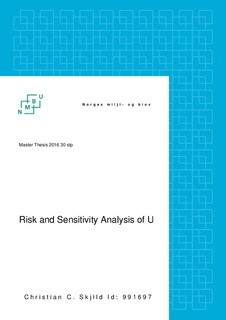| dc.description.abstract | The purpose of this study is to investigate and develop a risk model for oil and gas stocks. I focus on the US gas and oil stock return formation by studying how fundamental factors influence different quantiles of the return distribution. In this paper, I analyze the return distribution of 49 oil and gas stocks of NYSE, obtained from the five-factor model, using Quantile Regression method. Quantile regression offers an efficient alternative to ordinary least squares estimation. The model is more robust to outliers than ordinary least squares (OLS) and is semi-parametric, as it avoids assumptions about the parametric distribution of the error process. In order to obtain the Standard errors and confidence limits for the quantile regression coefficient estimates it us used bootstrapped standard error estimation.
Several interesting results emerge from this study analysis. First, this study not only shows that the factor models does not necessarily follow a linear relationship, but also shows that the traditional OLS becomes less effective when it comes to analyzing the extremes within a distribution, which is often a key interest for investors and risk managers. Generally speaking, the findings show that the median regression line is almost identical with the OLS regression line. However, as we move away from the median quantile toward estimates in the tails of the return distribution the coefficients changes notably. To further prove the difference between the coefficients across the quantiles, I use the Wald-test. The evidence suggests that the validity of the risk from different risk factors occurs in the upper and lower shoulders and tails, showing a significant difference from those derived from the median quantile.
Findings suggest that the sensitivity to important factors exhibit variation across the distribution. Investors in the oil and gas market will have substantially differences in the level of risk associated with their long/short position. For an investor with long position in an oil and gas stock, will be substantially greater risk associated with the position, in the comparison with an investor with a short position. Finally, as a demonstration of the practical use of the quantile regression method, I will propose a parametric one-week- ahead value at risk model (VaR) by using the 5th or 95th regression quantile. The model is easy to implement and it will let an investor with an idea about the futures price change of the risk factors be able to estimating/predicting expected shortfall. | nb_NO |
